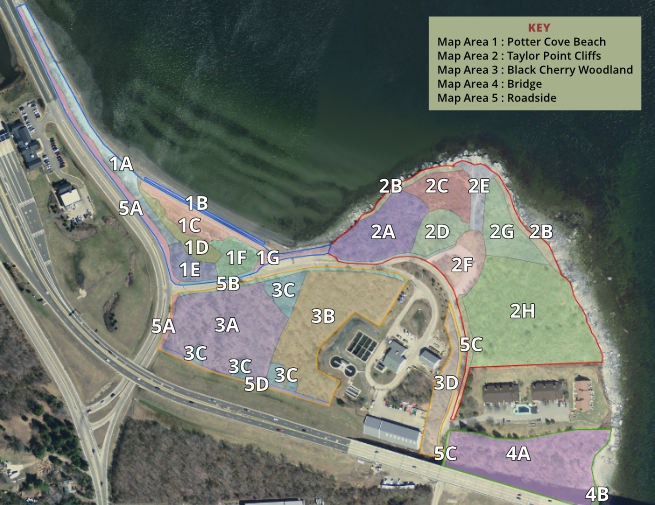Common Name: Morrow’s Honeysuckle
Specific Name: Lonicera morrowii
Known Occurrence at Taylor Point:
Map areas: Beach 1C, Beach 1F, Cliffs 2A, Cliffs 2B, Cliffs 2C, Cliffs 2D, Cliffs 2F, Cliffs 2H, Woodlands 3A, Woodlands 3B, Woodlands 3C, Woodlands 3D, Bridge 4A, Bridge 4B
Category: Invasive, Non-Native, Shrub
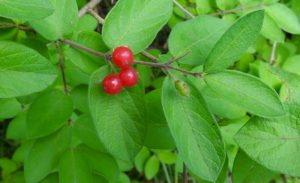
Ecological Considerations:
Lonicera morrowii is a woody, perennial shrub, with hollow stems. It reaches about 8 feet in height. Its flowers, which bloom in early spring, are paired and usually white, fading to yellow through the season. Its fruits are red berries, also borne in pairs. The berries appear in mid-summer and are usually gone in the fall.
Both the invasive Morrow’s Honeysuckle and the invasive Bells Honeysuckle are distinguishable from native species owing to their hollow stems. The stems of the native species are solid.
Morrow’s honeysuckle is commonly found in a wide variety of habitats, including abandoned fields, open disturbed areas, pasturelands, along roadsides and utility rights-of-way, and vacant lots. It thrives in mesic soils, but also grows well in dry, sandy soils in calcareous areas. Morrow’s Honeysuckle is only moderately shade tolerant.
Problems Posed by this Plant:
Lonicera morrowii can form dense impenetrable thickets that prevent other native plants from growing. It crowds and shades out native plant species, alters habitats by decreasing light availability, and depletes soil moisture and nutrients.
Lonicera Morrowii hybridizes with L. tatarica to form the hybrid L. x bella, which is also extremely invasive. It can then subsequently backcross with the hybrid forming a “hybrid swarm.” It is easily spread by birds and mammals that feed on its abundant fruits that ripen in mid-summer.
Native Species Affected by this Plant:
Factors Affording a Competitive Advantage to this Plant:
Morrow’s Honeysuckle can spread rapidly due to its ready dispersal by birds and mammals. It can form a dense understory thicket which can restrict native plant growth and tree seedling establishment.
Propagation Mechanisms and Related Issues Affecting Efforts to Remove and/or Eliminate this Plant from Taylor Point:
The seeds of Lonicera morrowii are mainly dispersed by birds and mammals which eat the fruits.
Documented Best Removal Practices and Options/Pros and Cons of Various Options:
Removal in spring has been found to be the most effective method for reducing cover, stem density and shrub density. By monitoring sunny, upland sites and open forests in spring, managers can identify Morrow’s Honeysuckle more easily since the non-native honeysuckle leafs out before the native species.
In early spring, immediately after leaf and flower formation, when when TNC ( total nonstructural carbohydrate value ) is lowest, hand-pull seedlings and small saplings. Ensure that the roots are worked out during hand-pulling or digging, since the honeysuckle can re-sprout from severed roots. Repeat this process throughout the growing season and use a weed wrench for established older plants. If a plant is too large for a weed wrench, cut stumps and cover them with buckthorn baggies. Monitor and repeat. (Suzanne Enser, TPRA CRMC Permit Request Support Document)
Control methods should be initiated prior to seed dispersal (late summer to early autumn) to minimize re-invasion of treated habitats.
Once adult honeysuckle have been removed or surpassed form an area, it is likely that large numbers of seedlings will germinate there the following growing season. Depending on the infatuation, if hand-pulling seems an ineffective method, a preferred effective alternative may be to burn them in the first growing season following the removal of adult plants. A propane spot burner can be used to kill individual or small groups of invasive plants.
Commercial kits are available for attaching propane cylinders to a backpack frame and fitting the cylinder with a flame nozzle. When plant and wet fuel conditions permit, the flame is directed at herbaceous and woody invasives. This operation can be convenient since it can be performed in wet conditions and when fuels are low. Best results are obtained under windless conditions as winds can prevent the heat from reaching the target weeds. (Suzanne Enser, TPRA CRMC Permit Request Support Document.)
Case Studies of Removal Efforts, Lessons Learned and Recommendations:
In the Black Cherry Woodland 3B, TPRA has worked to remove and cut Morrow’s Honeysuckle branches into small pieces to hasten its decomposition. In support of this work, in 2015, during 4 workdays, 32 volunteers worked for a total of 64 hours. During this time the volunteers also planted 6 Staghorn Sumacs to replace removed vegetation. In 2016during 4 workdays, 23 volunteers worked for a total of 57 hours. During these work days, the volunteers left the plant material in a pile.
In the Black Cherry Woodland-3A, TPRA has cut Morrow’s Honeysuckle to create paths for access to Cherry Trees. In 2017, during 6 workdays, 19 volunteers worked 47 hours.
In the Black Cherry Woodland-3B, Volunteers pulled out stumps or plants and cut them to hasten decomposition and covered cut stumps with Buckthorn Bags. The volunteers also revegetated the area with 1 Black Cherry, 2 Staghorn Sumacs , and 1 Bayberry. This activity occurred in 2017, on 2 workdays during which 7 volunteers worked 22 hours.
Lessons Learned: Cutting Morrow’s Honeysuckle without removing the entire plant is not effective. Covering stumps that are too large to remove may be helpful in keeping them from re-sprouting. Removal of the stumps is generally, though not always, effective.
Additional Photos:
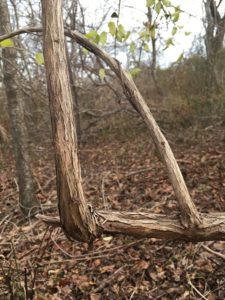
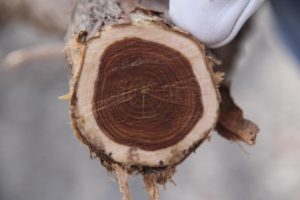
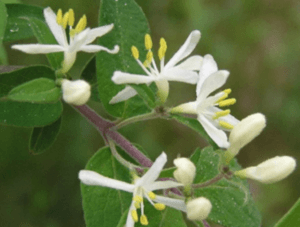
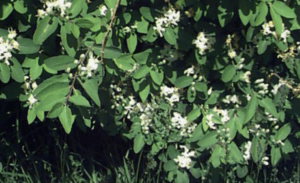
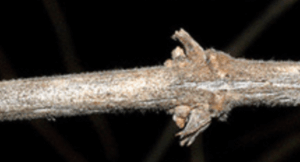
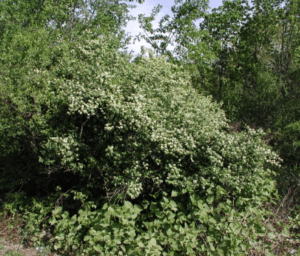
Sources cited:
Invasive Plant Atlas of New England
Midwest Invasive Species Information Network
U S Forest Service
Invasive Plant Atlas of the US
Suzanne Enser, TPRA CRMC Permit Request Support Document
Key Words:
Shrub;
Morrow’s honeysuckle
Lonicera morrowii
Seed – Berries / Drupes;
Potter Cove Beach
Taylor Point Cliffs
Black Cherry Woodland
Bridge
1-C, 1-F, 2A, 2B, 2C, 2D, 2F, 2H, 3A, 3B, 3C, 3D, 4A, 4B
